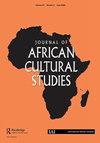《倾听:20世纪50年代至70年代南非收音机商业广告中的性别和种族》
IF 0.7
2区 社会学
Q2 CULTURAL STUDIES
引用次数: 0
摘要
本文采用视觉方法来研究听觉媒介。它认为,在20世纪50年代至70年代期间,收音机在南非的流行文化中具有强大的视觉存在感,当时大多数人购买了他们的第一台收音机。报纸刊登的收音机广告就是这种形象的最突出的例子。在南非、罗得西亚和赞比亚,广播广告发展出一种独特的美学,融合了全球和地方的影响,框定了新技术与社会之间的关系。尽管这台收音机是作为前瞻性的、表面上包容的现代愿景的一部分呈现的,但销售策略也有助于通过回顾过去殖民时期的种族和性别等级制度,将收音机与白人和男子气概联系起来。解放分界线两边广告的同质性表明,在正式非殖民化之前和之后,定居者殖民主义的文化影响无处不在。本文章由计算机程序翻译,如有差异,请以英文原文为准。
Looking at Listening: Gender and Race in Commercial Advertising for Radio Sets in Southern Africa from the 1950s to the 1970s
This article takes a visual approach to the study of an aural medium. It argues that the radio set had a powerful visual presence in popular culture in Southern Africa between the 1950s and the 1970s when most people bought their first radio sets. Advertisements for radios carried by the press offer the most prominent examples of this iconography. In South Africa, Rhodesia and Zambia, radio advertisements developed a distinctive aesthetic that blended global and local influences and framed the relationship between the new technology and society. Although the radio set was presented as part of a forward-looking, ostensibly inclusive vision of modernity, sales strategies also served to associate radio with whiteness and masculinity by looking backwards to the racial and gendered hierarchies of the colonial past. The homogeneity of advertising on both sides of the liberation divide demonstrates the pervasive cultural influence of settler colonialism both before and after formal decolonisation.
求助全文
通过发布文献求助,成功后即可免费获取论文全文。
去求助
来源期刊

Journal of African Cultural Studies
Multiple-
CiteScore
1.70
自引率
10.00%
发文量
13
期刊介绍:
The Journal of African Cultural Studies publishes leading scholarship on African culture from inside and outside Africa, with a special commitment to Africa-based authors and to African languages. Our editorial policy encourages an interdisciplinary approach, involving humanities, including environmental humanities. The journal focuses on dimensions of African culture, performance arts, visual arts, music, cinema, the role of the media, the relationship between culture and power, as well as issues within such fields as popular culture in Africa, sociolinguistic topics of cultural interest, and culture and gender. We welcome in particular articles that show evidence of understanding life on the ground, and that demonstrate local knowledge and linguistic competence. We do not publish articles that offer mostly textual analyses of cultural products like novels and films, nor articles that are mostly historical or those based primarily on secondary (such as digital and library) sources. The journal has evolved from the journal African Languages and Cultures, founded in 1988 in the Department of the Languages and Cultures of Africa at the School of Oriental and African Studies, London. From 2019, it is published in association with the International African Institute, London. Journal of African Cultural Studies publishes original research articles. The journal also publishes an occasional Contemporary Conversations section, in which authors respond to current issues. The section has included reviews, interviews and invited response or position papers. We welcome proposals for future Contemporary Conversations themes.
 求助内容:
求助内容: 应助结果提醒方式:
应助结果提醒方式:


